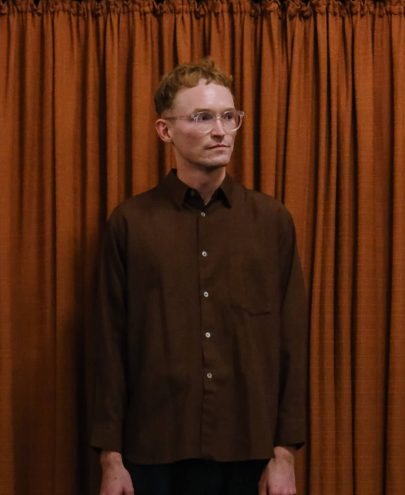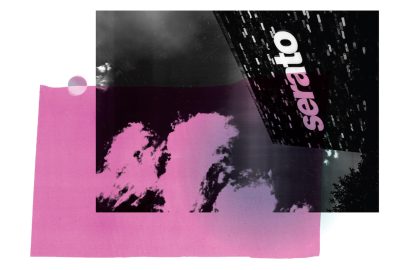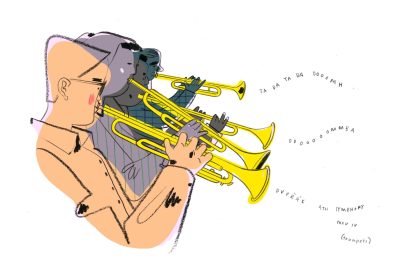Mar 18, 2016 Music

This is how clever John Adams’s Nixon In China is: the show’s showstopper aria literally does stop a show. In the second half of act two, Nixon and his wife Pat, a few days into their historic state visit to Mao’s communist China, are taken to see one of the Beijing Opera’s infamous propaganda ballets.
The scene is mildly surreal almost from the outset: the evil land agent oppressing the ballet’s peasants is played, with no explanation, by Nixon’s right-hand man, Henry Kissinger. (“Doesn’t he look like you-know-who?”, sings the sweetly clueless Pat to her husband). This darkly satirical detail (assuming one knows anything about Kissinger’s record with oppressed peoples) is only the preliminary springboard-flex for a deep dive into strangeness. Pat is overwhelmed by the horrors inflicted on the peasants, which she takes to be actually happening in front of her. She tries to intervene. Somehow her efforts to save an abused peasant girl become part of the ballet. The Beijing Opera’s terrifying patron, Madame Mao, leaps onto the stage and starts shouting directions to the performers, before bringing everything to a halt with the astonishing aria, “I am the wife of Mao Zedong”.
There is so much to say about the way the Auckland Arts Festival production of this modern masterpiece handles this scene. First and foremost: in Hye Jung Lee, it has a near-perfect Madame Mao. A silent presence throughout most of the scene, her body language makes her a powerful figure from the outset: impatient, imperious, chilling, formidable. When she starts to sing, it’s a sit-back-in-your-seat moment. She has exactly the glorious, fully controlled voice that you need for this role. The nearest analogue to “I am the wife of Mao Zedong” in the classical repertoire is probably the Queen of the Night’s famous solo in The Magic Flute – the same repeated virtuoso leaps upwards, the same do-or-die exposure for the soloist. I’ve heard singers soldier through it with audible signs of strain. Lee’s effortless mastery makes it one of the high points of a brilliant production.
Then there’s Amelia Chong, the young dancer who plays the peasant Pat Nixon attempts to rescue. This is only a “semi-staged” production, which I was prepared to find deeply disappointing: to go to the vast expense of putting on this mammoth work, with its huge orchestra, its full cast of demanding roles, its chorus, its dancers, and not find the extra cash to do it properly? When I first read about it, the idea of a stage full of singers standing there pretending they had decents sets and enough room to act in seemed like the definitive admission that New Zealand’s cultural sector is financially hamstrung. But director Sarah Brodie and her team have turned the Town Hall’s limitations as an opera venue into a strength, using the aisles, the choir stalls behind the orchestra, the stage-front, and a superbly utilised rear projection screen to construct what in effect becomes a fully immersive performance space. There is very little “semi” to this staging.
In order to work, this approach puts extra demands on the performers, and in particular, on the dancers. In a full production, the ballet scene would be exactly that, a fully produced professional ballet within the opera, with a whole troop of dancers commanding the stage while Pat, her husband and their entourage look on. Most of this has to be conveyed through the video screen, with some wonderfully managed interactive moments where figures on the screen pass things down to performers on the stage. But the heart of the scene’s surreal power comes from Pat’s dash into the middle of things to save the peasant girl, with its melding of two incompatible physical idioms. Pat is acting within the stage conventions of naturalism, because she thinks she’s actually saving an abused girl. All around her, the dancers are continuing their highly stylised ballet. In this production, Amelia Chong has to do nearly all the work of creating a dance-space into which the oblivious Pat can intrude. She’s simply splendid. The moment where, having collapsed from her mistreatment, she revives in Pat’s arms, and leaps lithely back into dance, is another highlight of the evening: so oddly sweet, so sweetly odd.
The ballet scene is well out to the far end of the opera’s strangeness spectrum, which makes it the most glaring instance of the one major problem with the production. Nothing in this work makes straightforward sense: characters seem to converse, but actually talk past each other, speaking to themselves, to history, to the audience’s richly ironic knowledge of their future. The libretto never quite means what it seems to be saying. To appreciate this, we need to be able to make out the words. “Brave choice to go without surtitles”, said a colleague of mine during the first intermission (there are a couple; the evening runs to a very brief-feeling two hours fifty minutes.) He was speaking in honest admiration, and he had a point: surtitles remove you from the flow of an opera’s language, and combining them with the beautifully designed images on the rear projection screen would have made for awkward visual compromises.
However. There’s no getting around the fact that in several key scenes, notably Nixon’s first act conference with Mao and the second act’s ballet scene, it was very hard to follow the words. Anyone not equipped with a good working knowledge of the libretto had to exchange the confusion of a densely patterned comic ambiguity for the confusion of not knowing what the hell was going on.
For scale, for ambition, and for what it achieves, this is the landmark event of this year’s arts festival.
This is not quite as bad as it may sound, because actually, it did not sound bad at all: whether or not the words were coming through, Adams’s churning, delicate, rough-edged music was always well balanced and transfixingly powerful. One reason the words kept getting lost was that with the orchestra on stage, rather than down in a pit, their sound was so strong that the singers had to be miked, and the sound mixing seemed to blur the edges of some voices a little, especially when more than one person was singing. But the amplification was unobtrusive, and the core sound came through very well, so that although I could rarely make out what Simon O’Neill’s Mao was singing, I never got tired of listening to him. His voice is a beautiful instrument.
Barry Ryan’s Nixon, on the other hand, is a beautiful singer who also managed to be mostly comprehensible throughout; and Andrew Collis gave us a Kissinger who sang strongly, clearly, and in a nicely comic German accent. Madeleine Pierard was lovely as Pat Nixon, both as singer and actor, especially in her act two tourist scene. (It featured the production’s best and lowest-tech accommodation to its venue limitations: when her proud Chinese hosts take Pat to admire a pig farm, the pigs are protrayed by a single actor down on his hands and knees. Pat rubs his hair fondly. “I once raised a red-ribbon boar”, she sings. It really shouldn’t work. It really works.)
For scale, for ambition, and for what it achieves, this is the landmark event of this year’s arts festival. There’s one more performance. For best results, read up on the opera before you go to it; in fact, go online and read through the libretto. Then scrape together the money and grab yourself a ticket. If I could afford to go again, I would.
Nixon in China, Town Hall, March Thurs 17, Sat 19, 7.30 pm





